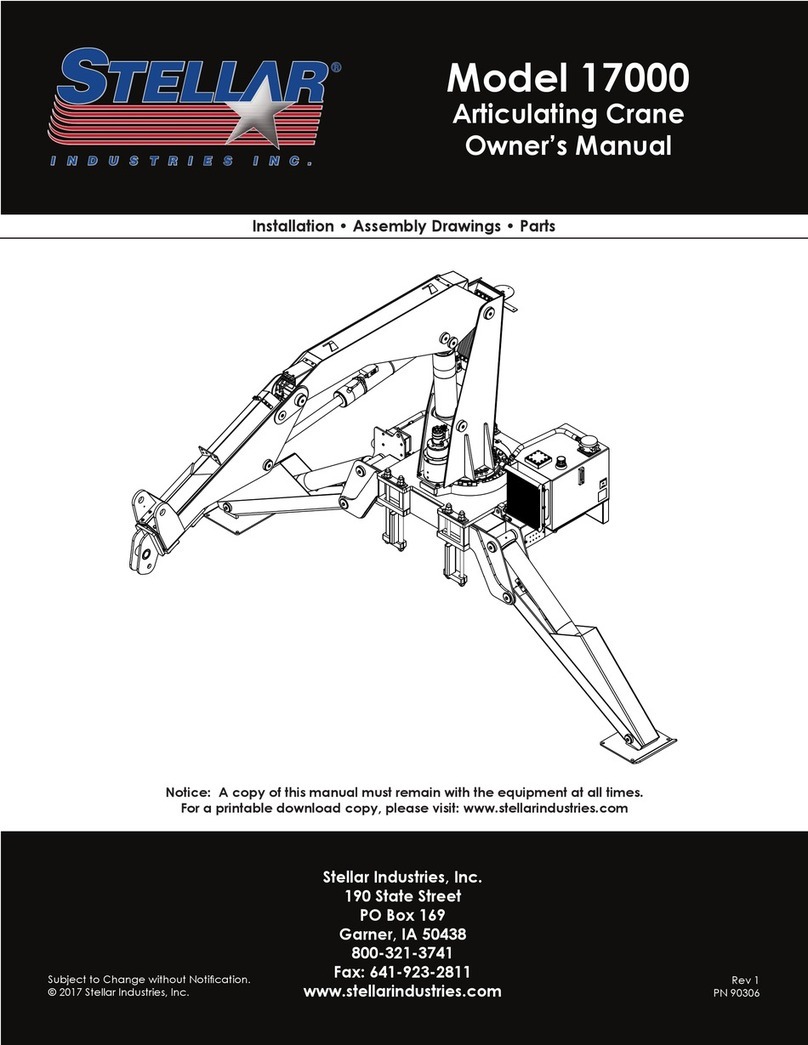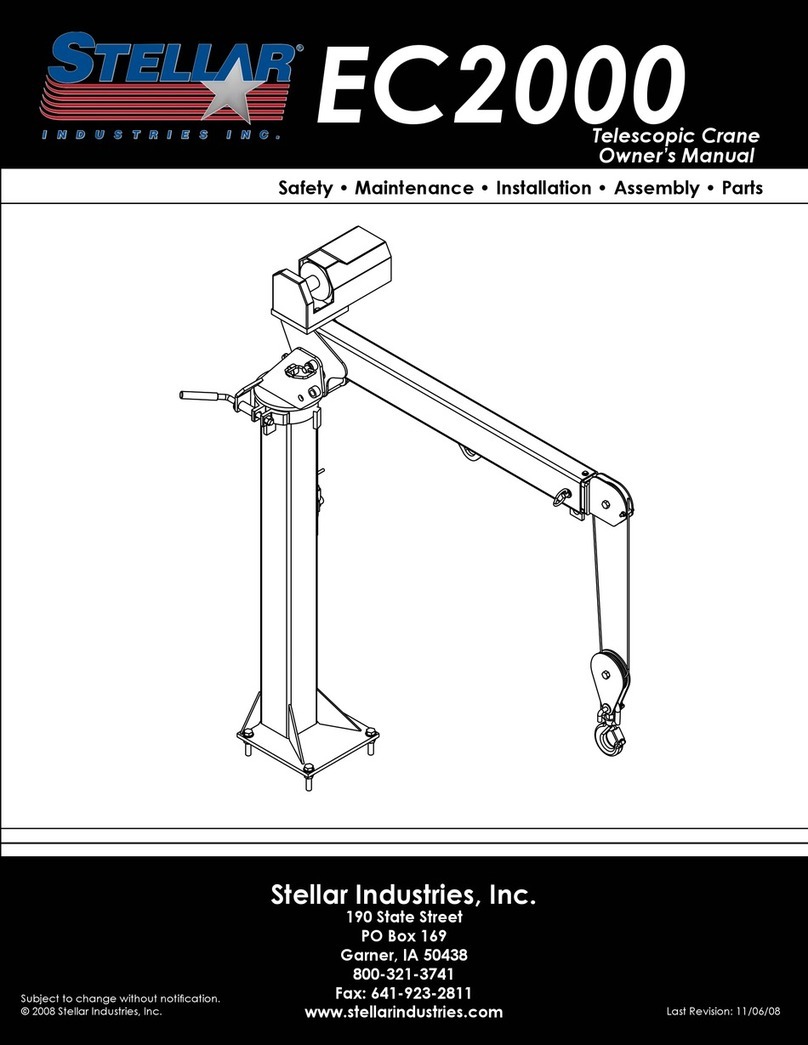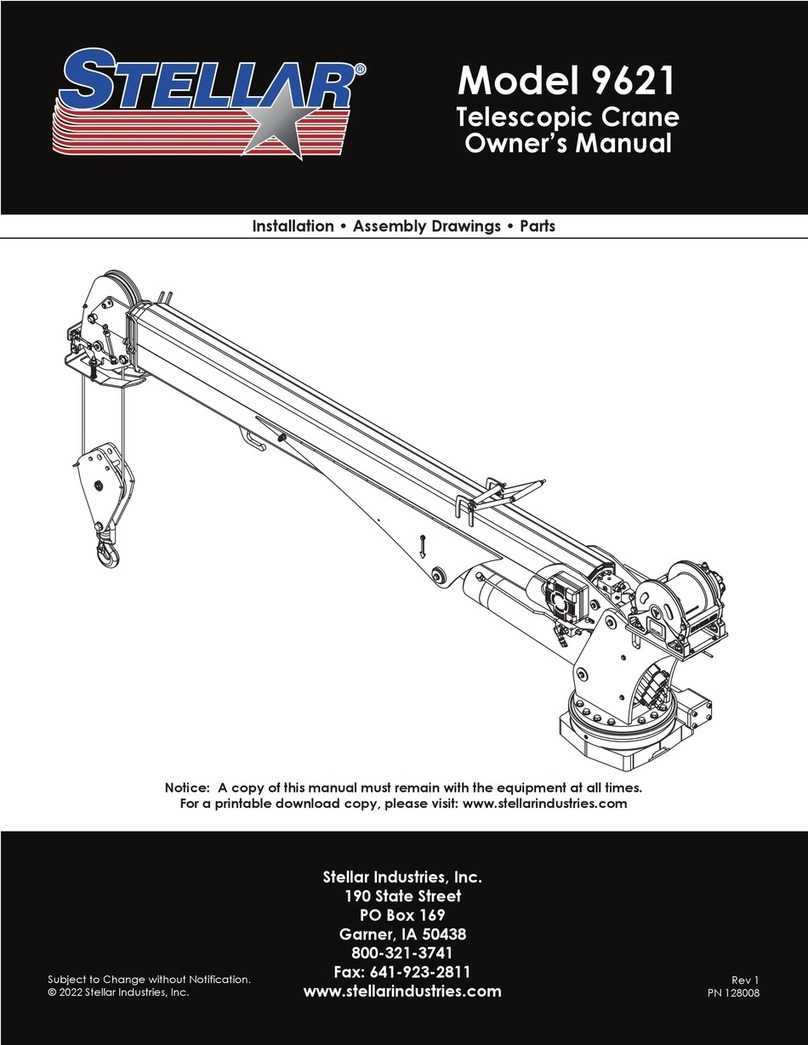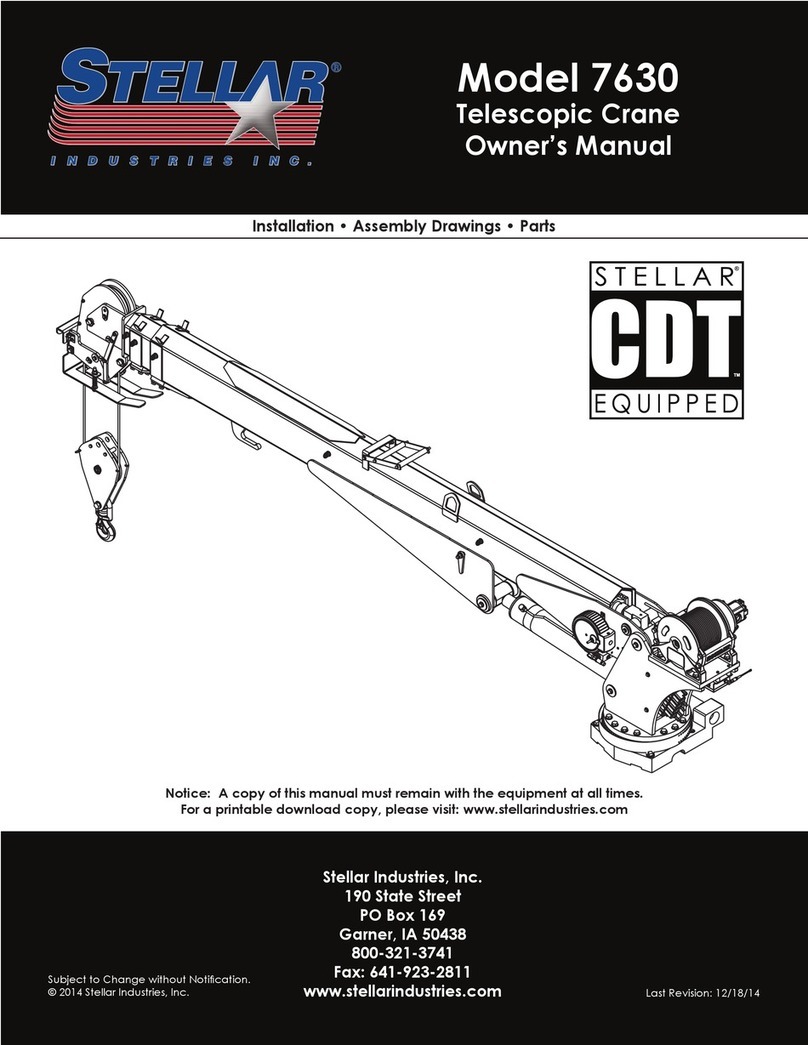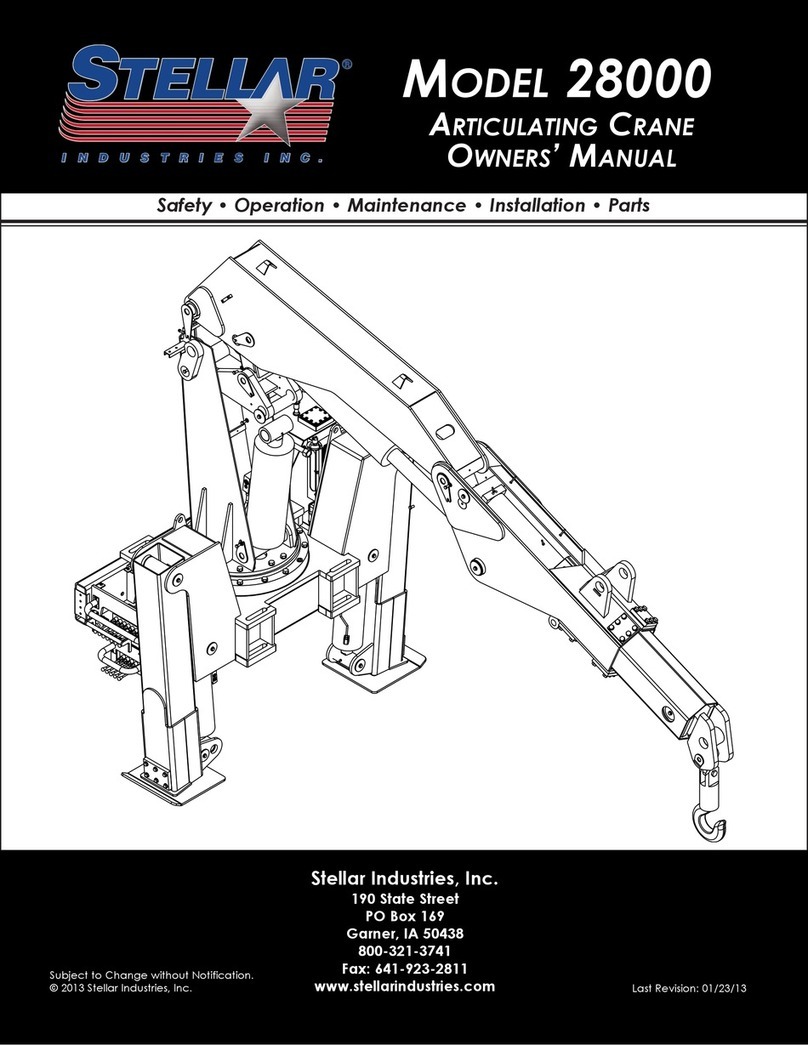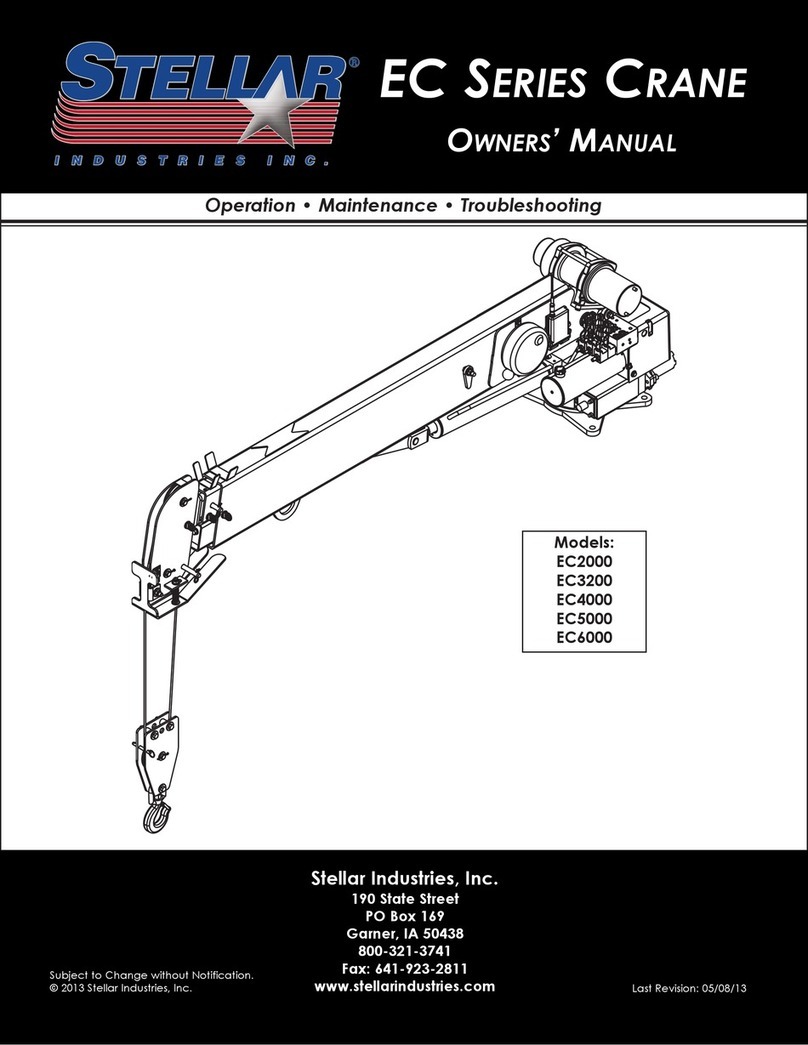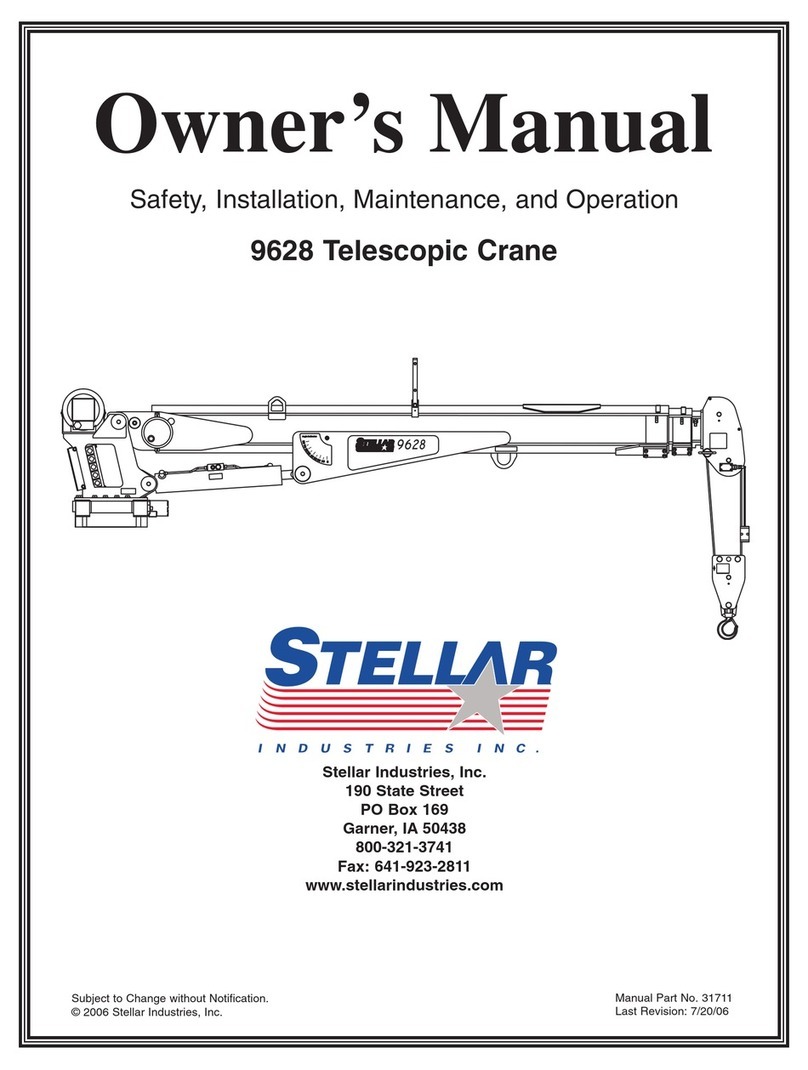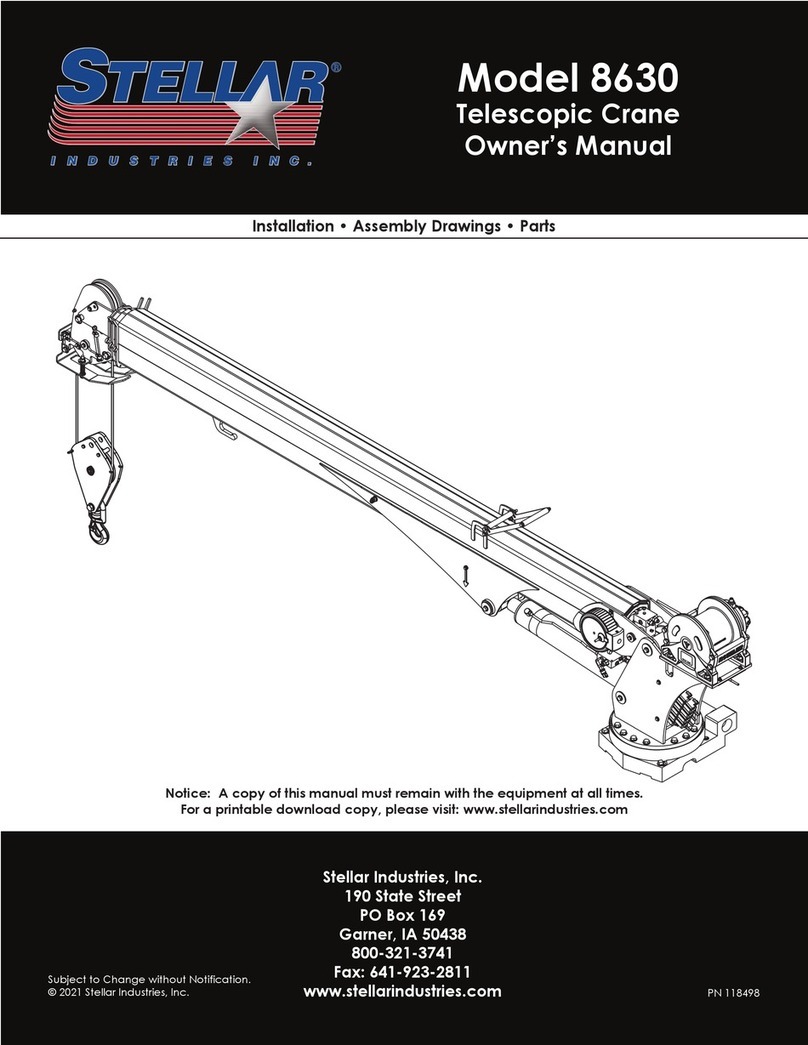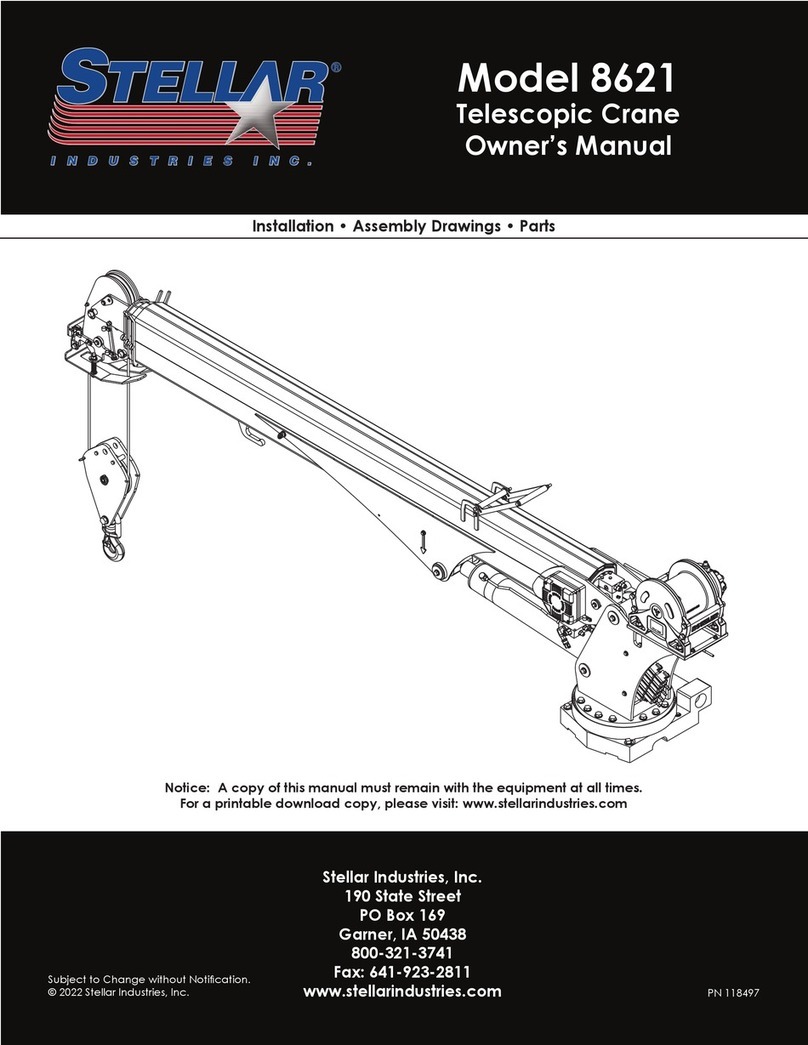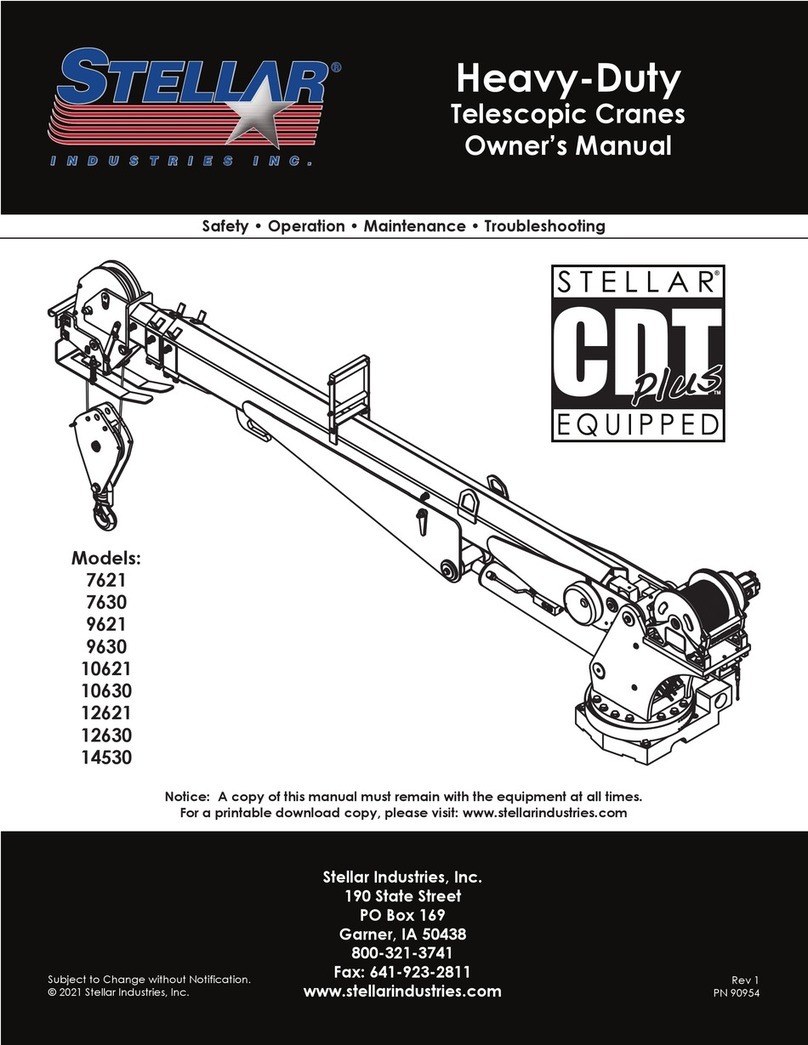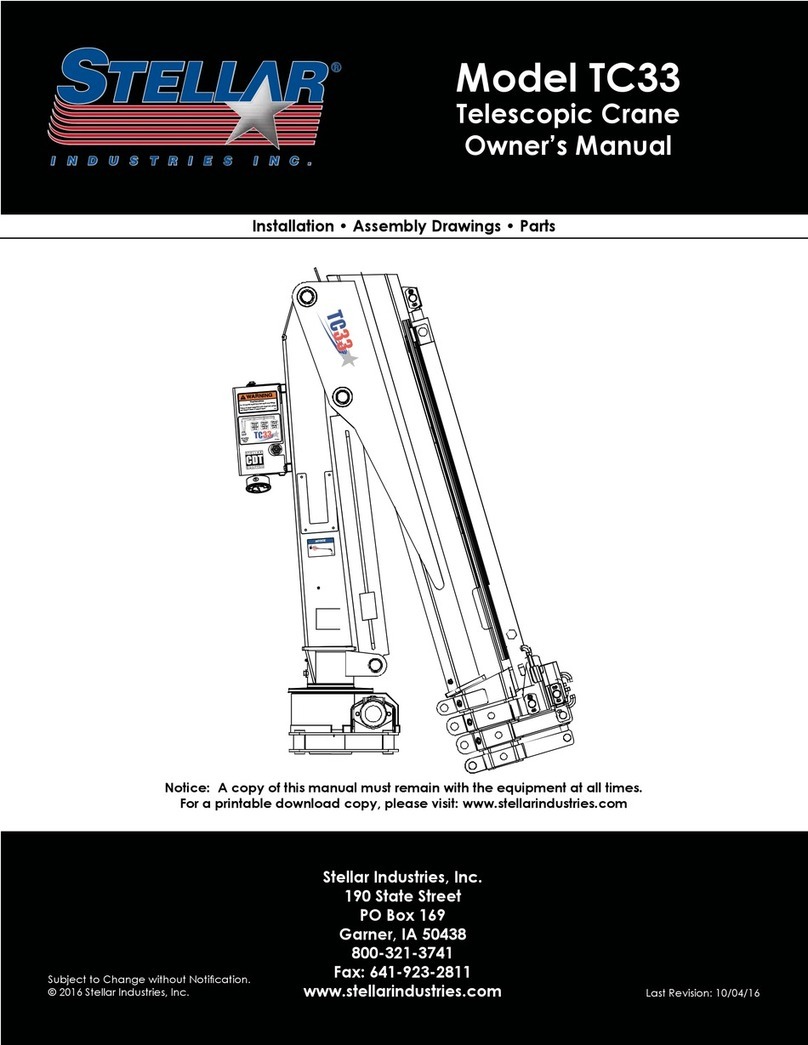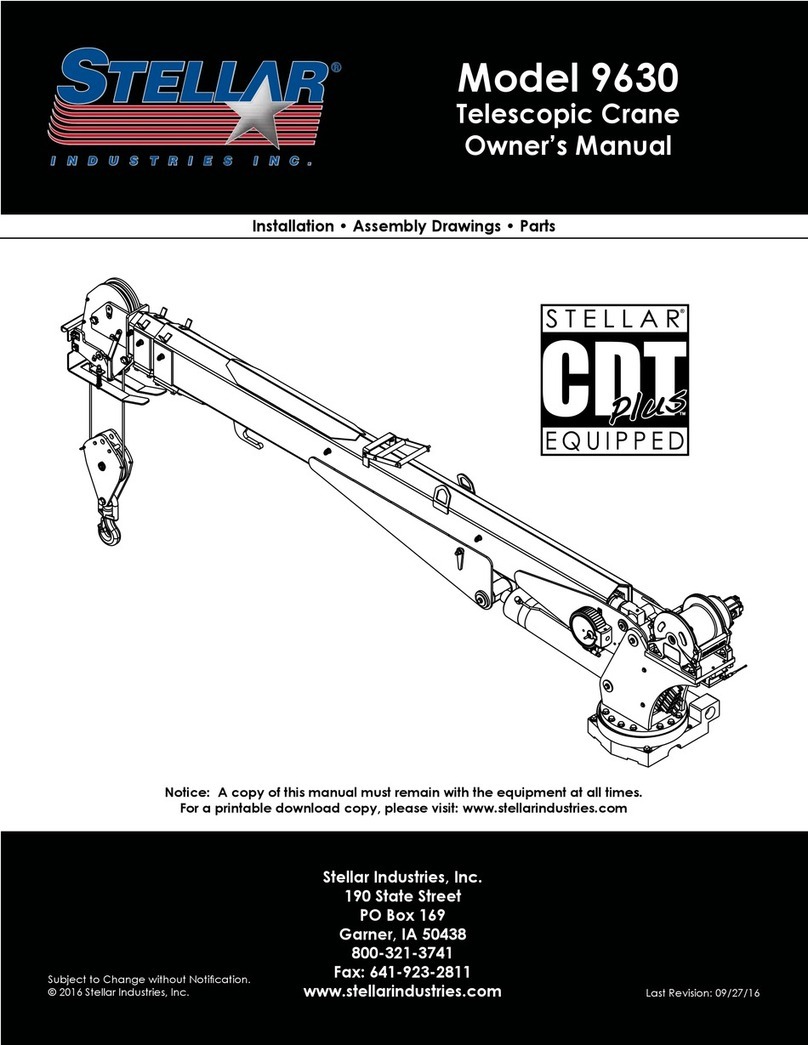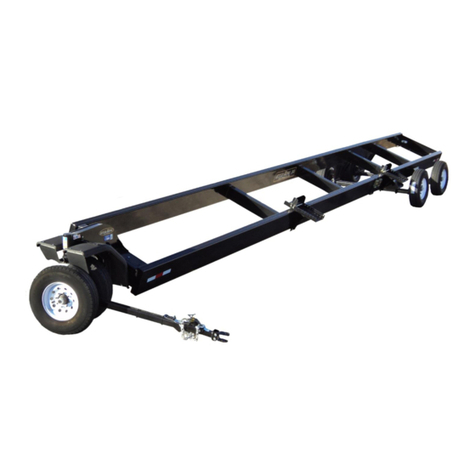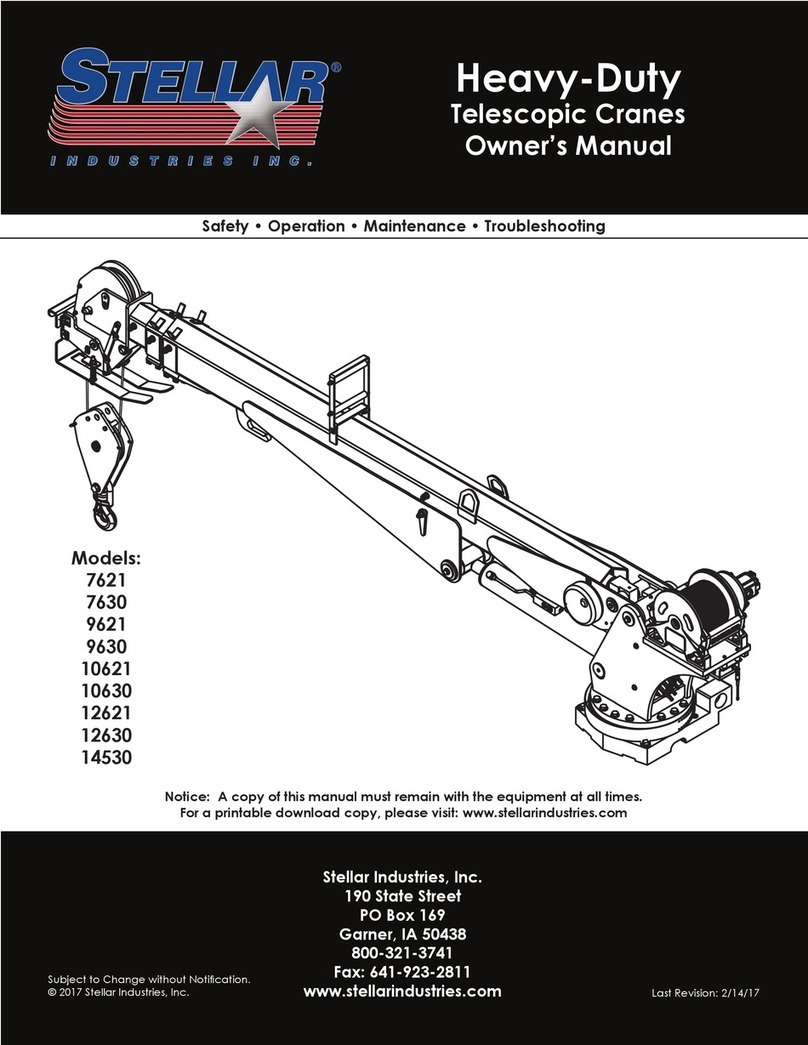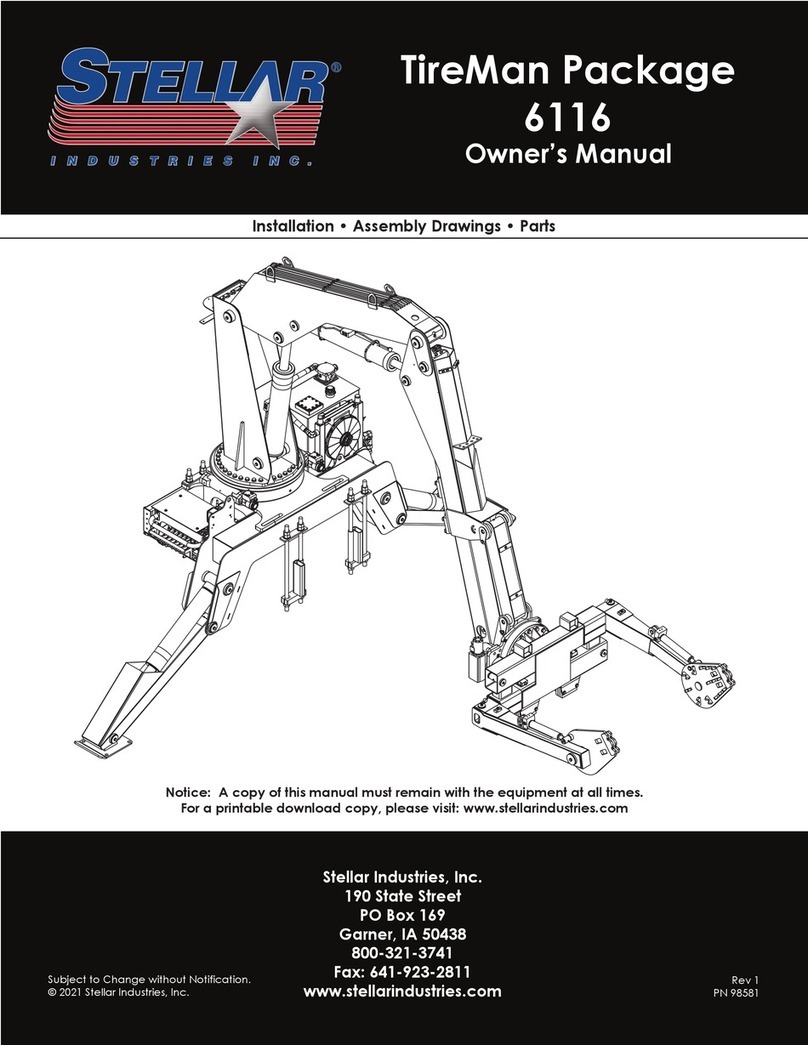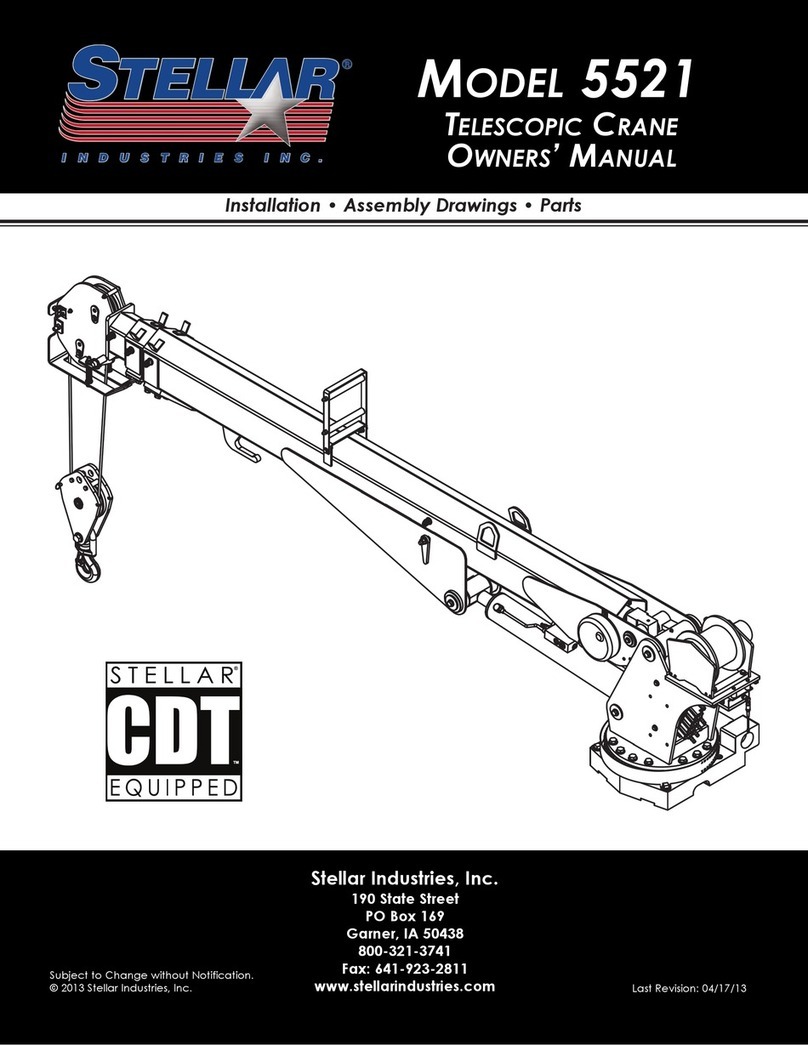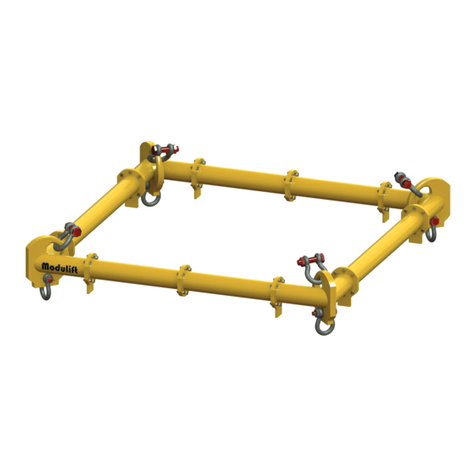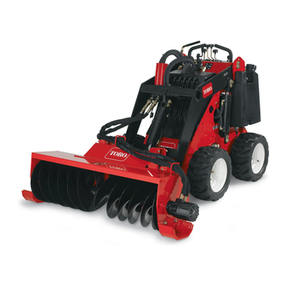
Page 6 | Stellar®Container Carrier General Manual
Before operating the equipment, make sure all regular maintenance has been performed.
Each day, inspect the container carrier for all of the following:
• Hydraulic reservoir oil level.
• Hydraulic hoses and tubing for evidence of damage such as blistering, crushing, or abrasion.
• All safety covers for proper installation.
• Equipment for missing, illegible, or defaced operating decals and safety signs.
• Structural weldments for bends, cracks, or breaks.
• All pins and keepers for proper installation.
• Presence of this owner’s manual.
• All pins, bushings, shafts, and gears for wear, cracks, or distortion to include all pivot points,
and bushings.
• Fork stop pins are securely in place.
• Trunion bar stops are free to move and work properly.
• Replace/repair as necessary prior to operation.
Pre-Operation Inspection
Thoroughly plan the lift by understanding the work site area and your loads before
positioning the vehicle. Consider the following:
• Know the weight of your load to avoid overloading the equipment.
• Only use the container carrier to lift Stellar approved containers.
• Do not overload the container carrier. Never exceed manufacturer’s
load ratings. These ratings are based on the machine’s hydraulic, mechanical, and
structural design rather than stability. Know the container carrier components and
their capabilities and limitations. Overloading the container carrier may result in serious
damage of self, others, equipment or the surroundings.
• Do not allow unauthorized personnel or equipment to enter within 10
feet of container carrier operating area. The vehicle should be positioned in an area
free from bystanders and overhead obstructions. Use a signal person if necessary.
• Always maintain safe clearance from high voltage power lines. Death
or serious injury will result from inadequate clearance if container carrier, load, or vehicle
becomes electrically charged.
• Make certain that the vehicle is parked on stable, flat ground as close to the job as
possible. The surface under the service truck must be able to support the weight of the
machine and its load. Take care when operating in areas supported by vehicle tires,
because of the cushioning effect of springs and tires.
• Do not operate the container carrier during electrical storms.
• In dusty work areas, every effort must be taken to keep dust and sand out of the moving
parts of the machinery.
• In high humidity work areas, keep parts as dry as possible and well lubricated.
Job Site Setup
